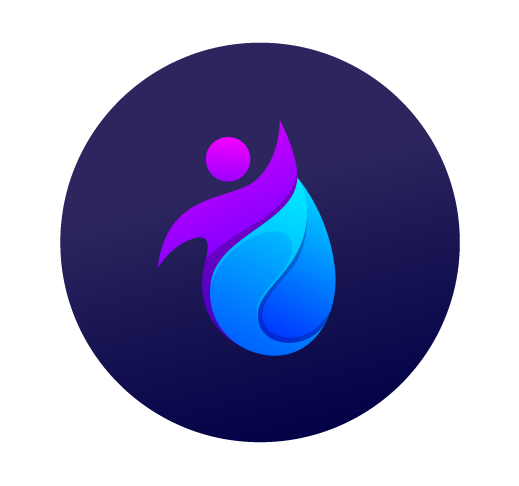A job search can feel like reading a puzzle, with job descriptions containing hidden clues about company culture and expectations. Sometimes, one phrase stands between you and your dream role.
While every job posting seems straightforward, the small details in job descriptions can radically change how well your resume fits. Knowing what to look for saves time and effort.
Dive into practical tips for reading job descriptions so you can make smarter career moves. This guide brings clarity with actionable steps, examples, and checklists for real job market results.
Spot and Interpret Must-Have Requirements to Target Your Resume
When you scan job descriptions, look for language that signals non-negotiable qualifications. Phrases like “required” or “must have” point to skills you’ll need to highlight first.
The ability to spot those signals makes tailoring applications efficient. Let’s break down real samples for a better grasp on crafting effective resumes tailored to each post.
Qualifications That Indicate Dealbreakers
Words such as “mandatory,” “required experience,” or “must possess” in job descriptions show which boxes you can’t skip. Miss one and your chances drop dramatically.
For example, if a listing says “Bachelor’s degree required,” recruiters may screen out applicants with only high school diplomas, regardless of experience. Check requirements before reading benefits.
Show concrete alignment using the same words. If you meet a must-have requirement, state it in your application: “I hold a Bachelor’s degree in Marketing.”
Nice-to-Haves Versus Core Demands
Many job descriptions include a ‘preferred qualifications’ list. Treat these as bonuses. They enhance your candidacy but aren’t strict cutoffs.
If a job description lists “strong project management skills preferred,” highlight relevant experience if you have it, but don’t skip applying if you lack that item alone.
Pace yourself with nice-to-haves. Apply anyway if you satisfy all core requirements; don’t let a missing bonus skill hold you back.
| Requirement Language | What It Means | Application Tip | What To Do Next |
|---|---|---|---|
| Required | Dealbreaker, must-have skill | Mirror this on your resume | Only apply if you meet this |
| Preferred | Bonus skill, not essential | Mention if possible | Apply if core requirements fit |
| Experience with X | Direct experience needed | Detail similar past work | Give clear, brief example |
| Knowledge of Y | Familiarity matters | Show learning initiative | Relate to recent roles |
| Ability to Z | Soft skill focus | Use action-based bullet | Be specific and outcome-focused |
Read Between the Lines: Identifying Keywords and Company Cues
Decoding job descriptions lets you pinpoint specific words that shape what recruiters seek. From action verbs to company jargon, these clues let you reflect the right tone and expertise.
Choosing the right words demonstrates cultural alignment—a must for standing out in a stack of applications.
Action-Oriented Language Reveals Expectations
Pay attention to verbs like “lead,” “manage,” and “support” in job descriptions. These signal the seniority and initiative expected for the role.
For instance, “lead team meetings” calls for project ownership, while “assist with events” flags supportive work. Adjust your phrasing to fit these cues in your resume.
- Start your experience bullets with matching verbs from job descriptions—show you’ve done the work using their language for quick relevance.
- Mirror company values: If they highlight “collaborative environment,” showcase teamwork stories to fit right in.
- Check for frequency terms like “daily,” “monthly,” or “as needed” to tailor your resume to expected rhythms and responsibilities.
- Notice if the job says “cross-functional teams.” Mention experiences where you worked across different departments or disciplines for instant synergy.
- Spot technology or process names to highlight technical fluency—e.g., “proficient with Salesforce” or “Agile methodologies.” Re-state direct experience clearly and concisely.
Keywords aren’t just for software screening—recruiters scan for them, too. Mimic their priority phrases to make your application memorable.
List of Cues That Signal Culture and Priorities
Culture phrases in job descriptions such as “fast-paced,” “entrepreneurial spirit,” or “collaborative workspace” hint at team dynamics and pace.
- Emphasize adaptability for fast-paced roles. Show examples of handling quick turnarounds or juggling multiple projects calmly and efficiently.
- Highlight innovation if “entrepreneurial” appears—add a story about launching a process or product that supported growth or changed outcomes.
- Echo “collaboration” using concrete partnership or team achievements—don’t just say “good communicator.”
- Show self-starting with phrases like “worked with minimal supervision.” Reinforce situations in which you solved problems independently.
- When diversity or inclusion is named, describe actual actions supporting inclusivity—e.g., “introduced language options to make team communication accessible for all.”
Tailoring your language this way makes it easy for hiring teams to see you fitting into their culture.
Break Down Responsibilities: Match Tasks With Your Real Experience
Identifying the action items in job descriptions ensures you connect your skills directly to the daily requirements of the target job.
This approach highlights your readiness, anchoring achievements to responsibilities that actually matter to each employer.
Demonstrating Tactical Alignment Through Examples
Job descriptions often say, “Manage event logistics, including vendor coordination and attendee communications.” If you’ve handled event planning, state: “Coordinated vendors and managed all logistics for corporate events.”
Analogize each experience to “plugging into an outlet”—show your skills powering real results. Link achievements to listed duties in active, direct sentences.
Make each bullet evaluate itself. After writing, ask: Does this prove I can do what the job asks for, using the same wording and scope?
Scenario-Based Micro Matches
Picture a company wants someone who “creates detailed reports for leadership.” Instead of “made reports,” specify: “Delivered quarterly analysis covering KPIs that enabled informed decisions at executive level.”
If a post emphasizes “cross-functional project work,” recall an instance you bridged teams: “Collaborated with marketing to launch new product line, coordinating timelines and goals between departments.”
In each match, stay realistic—don’t inflate your role. If you “supported” instead of “led,” state that to avoid misalignment during interviews.
Pinpoint Benefits and Red Flags: Weighing the Pros and Cons
Accurately reading job descriptions lets you balance opportunities against possible warning signs, so you can target the best fits and avoid mismatches.
Focusing your attention in this way narrows your search and ensures lasting job satisfaction by minimizing unpleasant surprises after onboarding.
Recognize Perks That Matter Most
Concrete perks such as “remote options,” “annual bonus,” or “tuition reimbursement” may be critical to your decision-making. Note what’s offered and compare it directly to your priority list.
Company-paid training programs signal career growth, while unlimited vacation might sound great but require follow-up questions on real usage averages during interviews.
- Track which jobs promise professional development and ask about real promotion stories when you interview.
- Check for wellness support, like mental health days, to prioritize employers who value work-life balance genuinely rather than in theory.
- Compare benefits against market norms. If the package falls short, clarify whether it’s negotiable or if the role compensates in learning or flexibility.
- Flag employer-funded benefits instead of reimbursements—actual upfront coverage beats retroactive payments for most employees.
- Use job descriptions as a negotiation starting point; don’t assume you’re limited to what’s posted.
Be intentional as you weigh benefits, so you focus energy on opportunities that match your long-term priorities.
Spotting Red Flags Within the Posting
Phrases like “flexible hours—nights and weekends required” or “high tolerance for ambiguity” in job descriptions may point to hidden overtime or unclear roles. Prepare clarifying questions for interviews.
- If turnover is referenced in vague terms such as “recent changes in leadership,” ask directly about team stability to gauge job security.
- Ambiguous role definitions could mean unclear expectations; press for examples in interviews to set success benchmarks early.
- Rapid expansion with little structure may feel exciting, but brings risks. Make sure you’re comfortable with growth curve chaos by referencing past adaptability.
- Language like “wear many hats” signals multitasking and blurred lines—good for those who like variety but risky if you prefer focused work.
- Lack of mention about professional development or advancement implies limited growth. Ask whether they invest in upskilling once you reach the interview stage.
Balance every red flag against your priorities. If several surface, consider skipping the application to protect your job search success.
Apply Strategic Checklists: Prepare Better, Respond Faster
Using step-by-step checklists when reading job descriptions brings discipline and clarity—saving time and reducing costly misreads or missed opportunities in the job market.
This systematic approach transforms scattered notes into precise next actions, improving your ability to respond promptly to relevant postings.
Checklist for Reviewing Each Posting
Scan for core skills or certifications needed. List everything flagged as “must-have.” Note technical skills, length of experience, and direct alignment to your accomplishments.
Highlight every duty or responsibility matching your experience. Tick items for which you have direct, recent success. Set aside jobs requiring numerous qualifications you lack to save time.
Track keywords such as role titles, process names, and relevant tools. Keep a personal library of phrases to re-use, speeding up your tailoring process for each submission.
Step-by-Step Resume Customization Rule
First, duplicate your resume for each new job. Next, cross-reference every bullet point with job descriptions, ensuring crucial skills and results are front and center.
Start each resume bullet with the same verbs and phrasing as the job description. This way, hiring teams see a direct match and strong understanding of their needs.
Finally, ask a friend or mentor to review your customized resume for alignment, clarity, and engagement. A second set of eyes guarantees you’re presenting your best fit.
Refine Your Search: Tips for Filtering by Fit and Ambition
Effective job searching starts with clear criteria, tailored to personal strengths and growth goals reflected across job descriptions.
This method ensures applications go only to roles you genuinely want to pursue, while also stretching ambition in useful ways.
Building a Personal Criteria List
Create a list of your non-negotiables—location, salary, remote policy, growth opportunities—as a baseline to compare against each job description.
For every posting, note which boxes it checks. Only invest time applying if core fit points align with your ongoing career plan and aspirations.
If you want stretch roles, look for job descriptions with growth signals such as mentorship, cross-training, or expanding business areas. Apply with a clear development pitch.
Choosing Ambition Without Overreach
If a posting describes “opportunity for leadership development,” add a line in your cover letter about how that aligns with your next career step. Use their wording to specify your goals.
Test readiness by upskilling before applying. If a role demands new technology skills, take a short course and mention current training in your resume. Show learning agility up front.
Balance aspiration and reality; aim for jobs just outside your comfort zone, but anchor applications in honest self-assessment and visible progress toward new competencies.
Summing Up: Gaining Clarity and Confidence When Navigating Job Descriptions
Job descriptions, when read accurately, become your roadmap for a more confident, effective approach to the job market.
Knowing how to interpret signals, filter wisely, and mirror language ensures real alignment between your expertise and employer needs, strengthening every application.
Set routines for evaluating job descriptions and customizing applications so you can move forward with insight, speed, and greater control over your career journey.



